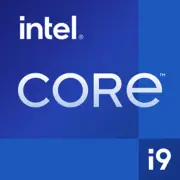Intel Core i9-9980XE Extreme Edition

2025年のIntel Core i9-9980XEエクストリームエディション:考慮する価値はあるか?
エンスージアストとプロフェッショナルのための現在の分析
1. 主な特徴:旧世代の巨人
2018年に発売されたIntel Core i9-9980XEプロセッサは、そのユニークな構成により、今でも注目を集めています。
- アーキテクチャとプロセス技術:Skylake-Xマイクロアーキテクチャ(14nm)に基づいており、2025年でもニッチなタスクでの生存力を示しています。14nmプロセス技術は、現代の5-7nmチップに対して時代遅れに見えるかもしれませんが、当時のIntelの技術的解決策は強度の余裕を保証しました。
- コアとスレッド:18コアと36スレッドは、並列計算にとって「重い火力」です。基本周波数は3.0GHzで、Turbo Boost Max 3.0により1-2コアで4.5GHzまで到達できます。
- キャッシュとPCIe:L3キャッシュは24.75MB、PCIe 3.0(44レーン)をサポートしています。PCIe 5.0時代において、ストレージやグラフィックスカードの速度を制限しますが、依然として多くの作業タスクには十分です。
- 主な特徴:Intel Thermal Velocity Boost(TVB)技術のサポート、オーバークロック用のアンロック倍率、四チャネルメモリコントローラー。
実例:2024年、Overclockers.ruのフォーラムで、ユーザーはi9-9980XEをすべてのコアで4.2GHzまでオーバークロックし、Corsair H150iの液体冷却システムを使用して3Dモデルのレンダリング時間を15%短縮しました。
2. 対応マザーボード:レアモンスターを狙え
プロセッサはLGA 2066ソケットを使用しており、Intel X299チップセットに結びついています。
- 2025年の最新マザーボードモデル:新しいボードは稀にしか見つかりませんが、オークションや在庫でASUS ROG Rampage VI Extreme(約350-450ドル)、MSI X299 Gaming Pro Carbon AC(250-300ドル)またはGigabyte X299 AORUS Master(300-400ドル)を見つけることができます。
- 選択のポイント:安定したオーバークロックのために強化されたVRM(例:12フェーズ電源)を備えたボードを探してください。Wi-Fi 6とUSB 3.2 Gen 2のサポートを確認してください。一部のX299モデルにはこれらの機能がすでに装備されています。
- 互換性の問題:マザーボードのBIOSは、第9世代Core Xシリーズをサポートするバージョンに更新する必要があります。
アドバイス:ボード探しに「狩り」をする気がないなら、i9-9980XEの互換性が劣る現代のプラットフォーム(LGA 1700またはAM5)への移行を検討してください。
3. メモリ:DDR4という遺産
プロセッサは四チャネルDDR4をサポートしており、公式周波数は最大2666MHz(オーバークロックで3600-4000MHzに達します)。
- 推奨の容量:64-128GB(8x16GBモジュール)は、レンダリングや仮想化に最適です。
- 制約:2025年にはDDR4はDDR5に対して帯域幅で劣ります(DDR5-6400は最大64GB/sに対して最大51.2GB/s)、ただし価格は安価です。128GB DDR4-3200のキットは約300-400ドルで、同等のDDR5は600ドル以上です。
実例:2023年、ある編集スタジオはi9-9980XEと128GB DDR4-3600を使用してDaVinci Resolveで作業しており、8K処理の遅延は最小限でした。
4. 電源ユニット:電力を節約しない
TDP 165Wおよびピーク消費電力300W(オーバークロック時)の要件が厳しいです:
- 最低限:750W(NVIDIA RTX 4070クラスのシステム用)。
- 推奨事項:80 Plus Gold / Platinum認証のユニット(Corsair RM850x、Seasonic PRIME GX-850)。安価なモデルは避けてください。安定しない電源供給はCPUを損傷する可能性があります。
- 注意点:RTX 5080やその類似品へのアップグレードを計画している場合、1000W以上の電源ユニットを検討してください。
5. 長所と短所:誰に適しているか?
長所:
- レンダリング、エンコード、シミュレーションに対する高いマルチスレッド性能。
- 良好な冷却で最大20%のオーバークロックの可能性。
- Windows 11およびLinuxとの互換性(ドライバーは最新)。
短所:
- 高い電力消費(2025年には高額で、24/7で1年使用すると電気料金0.15ドル/kWhの場合、約200ドルかかります)。
- PCIe 4.0/5.0、DDR5、AIアクセラレーターのサポートがない。
- 新しい価格(見つけられた場合)— 600-800ドルで、同価格帯のAMD Ryzen 9 7950X(550ドル)の方が効率が良いです。
6. 使用シナリオ:まだ光る場所
- 作業タスク:
- Blender、Cinema 4Dでの3Dレンダリング。
- コードのコンパイル(例えば、Unreal Engine 5)。
- 仮想化(18コアを複数のVMで共有)。
- ゲーム:
- ゲームには最適ではありません:フレームレートに依存するゲーム(例:CS2、Valorant)での遅延が大きい。しかし、ストリーミング(OBS + ゲーム)には18コアが役立ちます。
- マルチメディア:
- Premiere ProやAfter Effectsでのビデオ処理には適していますが、Intel Core i7-14700KのQuick Syncよりもエクスポートが遅くなります。
7. 競合との比較
- AMD Ryzen Threadripper 2970WX(2018年):24コア、48スレッド、しかしIPCは劣ります。中古市場で400-500ドル。マルチスレッド性能では優れていますが、ゲームでは劣ります。
- 現代の類似品(2025年):Intel Core i9-14900K(24コア、5.8GHz、DDR5)— 580ドル。AMD Ryzen 9 7950X3D(16コア、3D V-Cache)— 650ドル。どちらもエネルギー効率が良いです。
結論:i9-9980XEはX299マザーボードを無料または安価に保有している場合にのみ有利です。
8. 組み立てに関する実践的なアドバイス
1. 冷却:360mmラジエーターを備えた液体冷却システム(Arctic Liquid Freezer II)または最高級のエアクーラー(Noctua NH-D15)を使用してください。
2. メモリ:BIOSでXMPプロファイルを有効にしてオーバークロックを行ってください。
3. 追加のPCIeデバイス:PCIe 3.0をオーバーロードしないようにしてください — 例えば、NVMe SSDとGPUが帯域を共有すると、ディスクが遅くなることがあります。
4. 電源:マザーボードの両方の8ピンCPUコネクタに接続してください。
実例:2024年の構成:i9-9980XE + RTX 3090 + 128GB DDR4 + 2x NVMe SSD。ユーザーはCyberpunk 2077のFPS低下に不満を感じていました。原因はGPUのためのPCIe 3.0 x16のボトルネックです。
9. 最終的な結論:2025年にi9-9980XEは誰に適しているか?
このプロセッサを考慮する価値があるのは、次の2つの場合のみです。
1. 古いシステムのアップグレード:すでにX299マザーボードとDDR4を持っている場合、i9-9980XEのインストールがプラットフォームを交換することなく性能向上をもたらします。
2. 予算重視のワークステーション:中古市場でCPU + マザーボード + 64GB DDR4のセットを800-1000ドルで見つけることができ、新しいThreadripperよりも安価です。
適さない人:ゲーマーや新しい技術のエンスージアスト、静音性とエネルギー効率を重視する人々。
結論:2025年のIntel Core i9-9980XEは、X299プラットフォームにとどまっているプロフェッショナルや「予算モンスター」を構築しているエンスージアストにとってのニッチなツールです。それ以外のケースでは、現代のプロセッサに投資してください。
基本
CPUの仕様
メモリ仕様
その他
ソーシャルメディアで共有する
または当サイトへのリンクを追加
<a href="https://cputronic.com/ja/cpu/intel-core-i9-9980xe-extreme-edition" target="_blank">Intel Core i9-9980XE Extreme Edition</a>